
Ebm@school – a curriculum of critical health literacy for secondary school students
A curriculum based on the concept of evidence-based medicine, which consists of six modules.
| 0 Comments | Evaluated
Thinking, talking, doing science
An experimental educational intervention in teaching science at primary schools.
| 0 Comments | Evaluated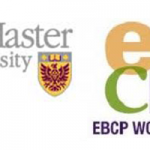
McMaster Evidence-Based Clinical Practice Workshop Resources – Therapy module
McMaster Evidence-Based Clinical Practice Workshop – Therapy module.
| 0 Comments
McMaster Evidence-Based Clinical Practice Workshop Resources – Systematic review module
McMaster Evidence-Based Clinical Practice Workshop – Systematic review module.
| 0 Comments
Assessing Risk of Bias in Included Studies
An introduction to assessing risk of bias using the Cochrane ‘Risk of Bias Tool’.
| 0 Comments
University of Western Australia: Bias Minimisation, were the right patients included?
University of Western Australia’s explanation of the importance of involving the right people in treatment comparisons.
| 0 Comments
Evaluating the validity of a therapy study
A web-based Duke University tutorial explaining how to address the question: are the results of the study valid?
| 0 Comments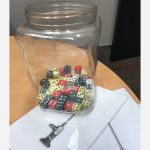
Teaching Tip: Understanding Regression to the mean in preparation for teaching EBM
Chris Del Mar uses dice to simulate the natural fluctuations in pain, and to illustrate regression-to-the mean by re-testing the outliers.
| 0 Comments
How can you know if the spoon works?
Short, small group exercise on how to design a fair comparison using the "claim" that a spoon helps retain the bubbles in champagne.
| 0 Comments
‘Tricks to help you get the result you want from your study (S4BE)
Inspired by a chapter in Ben Goldacre’s ‘Bad Science’, medical student Sam Marks shows you how to fiddle research results.
| 0 Comments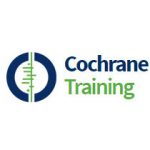

Teach Yourself Cochrane
Tells the story behind Cochrane and the challenges finding good quality evidence to produce reliable systematic reviews.
| 3 Comments
Basic principles of randomised trials, and validity
A 8-min talk on ‘Basic principles of Randomised Trials, and Validity’, illustrated by 15 slides, with notes.
| 0 Comments
Appraising the evidence
Six key slides produced by the University of Western Australia to introduce critical appraisal.
| 0 Comments
Critical appraisal of clinical trials
Slides developed by Amanda Burls for an interactive presentation covering the most important features of well controlled trials.
| 0 Comments
Randomized Control Trials
1/2, 40-min lecture on randomized trials by Dr R Ramakrishnan (Lecture 25) for the Central Coordinated Bioethics Programme in India.
| 0 Comments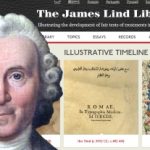
Why avoiding differences between treatments allocated and treatments received is important
Knowledge of which treatments have been received by which study participants can affect adherence to assigned treatments and result in bias.
| 0 Comments
A simple fair testing plan for science lessons
A short worksheet to help students devise a Fair Test.
| 0 Comments
Worksheet for planning fair tests
A TES worksheet to guide primary school children in planning a Fair Test.
| 0 Comments
Drug trials in healthy volunteers
A 6-minute video illustrating an early phase clinical trial in healthy volunteers.
| 0 Comments
How are medicinal drugs tested?
A group of text files for teaching students about how medicinal drugs are tested.
| 0 Comments
Designing a fair test
Using an everyday example to try to help students realise what fair testing involves.
| 0 Comments
Double blind studies
A webpage discussing the importance of blinding trial participants and researchers to intervention allocation.
| 0 Comments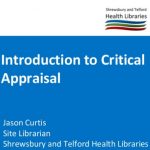
Introduction to Critical Appraisal
30-slide introduction by Jason Curtis, to Critical Appraisal.
| 0 Comments
Randomized Controlled Trial Protocols
A 1-hour videoed lecture explaining protocols for Randomized Control Trials (RCTs).
| 0 Comments
How do you know which healthcare research you can trust?
A detailed guide to study design, with learning objectives, explaining some sources of bias in health studies.
| 0 Comments
The Fair Test (controlling variables)
TES PowerPoint presentation of 9 slides about the importance of controlling variables (i.e. conducting a fair test).
| 0 Comments
Fair testing PowerPoint
A TES, 15-slide PowerPoint presentation by Keith Jarvis about Fair Testing, for 11-14 year olds.
| 0 Comments
Investigation: Designing a fair test
A teaching tool for teachers to illustrate how to carry out fair tests.
| 0 Comments
The placebo effect
A video by NHS Choices explaining what the placebo effect is, and describing its role in medical research and the pharmaceutical industry.
| 0 Comments
What did James Lind do in 1747?
A 2 minute Video clip of a BBC documentary recreating James Lind's celebrated experiment to test treatments for scurvy.
| 2 Comments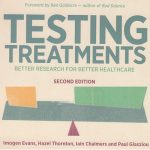
ผู้ป่วยโรคสะเก็ดเงินแทบไม่ได้รับประโยชน์จากงานวิจัย
“มีการทดลองไม่กี่เรื่องที่เปรียบเทียบทางเลือกต่างๆ หรือการดูแลผู้ป่วยในระยะยาว การศึกษาต่างๆ ทำในระยะสั้นจนไม่น่าเชื่อถือ เมื่อคำนึงถึงว่าโรคนั้นมีแนวโน้มจะเรื้อรังแทบตลอดชีวิต ดูเหมือนสิ่งที่รู้ชัดมีเพียงว่าวิธีการรักษาที่ใช้นั้นดีกว่าไม่ทำอะไรเลย ที่สำคัญนักวิจัยละเลยประสบการณ์ มุมมอง ความต้องการ และ ความพึงพอใจของผู้ป่วย” อาร์ จ็อบลิง ประธานสมาคมโรคสะเก็ดเงิน (Psoriasis Association) Jobling R. Therapeutic research […]
| 0 Comments
ช่วยให้ผู้เข้าร่วมการศึกษาใช้วิธีการรักษาตามที่จัดสรรให้
ในการเปรียบเทียบวิธีการรักษา วิธีที่วางแผนไว้อาจแตกต่างจาก วิธีที่ใช้จริงในหลายรูปแบบ ซึ่งอาจทำให้การแปลผลการตรวจสอบวิธีการ รักษายิ่งซับซ้อน ผู้ที่เข้าร่วมในงานวิจัยไม่ควรถูกกีดกันไม่ให้ได้รับวิธีการรักษาที่จำเป็น เมื่อทำการตรวจสอบอย่างเที่ยงธรรมเพื่อศึกษาวิธีการรักษาแบบใหม่ที่หวังว่าจะมีประโยชน์แต่ยังไม่ได้พิสูจน์ ควรมีการรับรองกับผู้ป่วยที่เข้าร่วมว่าทุกคนจะได้รับวิธีการรักษาที่ทราบแล้วว่ามีประสิทธิผล หากมีคนรู้ว่าใครจะได้รับอะไรในการศึกษาหนึ่งๆ ก็อาจเกิดความลำเอียงหลายประการ ประการแรกคือ ผู้ป่วยและแพทย์อาจรู้สึกว่าผู้ที่ถูกจัดสรรให้รับวิธีการรักษา “ใหม่” โชคดีจนอาจเสริมแต่งประโยชน์ของวิธีการรักษาเหล่านี้เกินจริงโดยไม่รู้ตัว ตรงกันข้ามผู้ป่วยและแพทย์อาจรู้สึกว่าผู้ที่ถูกจัดสรรให้รับวิธีการรักษาที่ “เก่ากว่า” เสียโอกาส ซึ่งความผิดหวัง นี้อาจทำให้ประเมินผลดีต่ำกว่าที่เป็นจริง นอกจากนี้แพทย์ยังอาจให้การดูแลรักษาเสริมแก่ผู้ป่วยที่ถูกจัดสรรให้รับวิธีการรักษาที่เก่ากว่า […]
| 2 Comments
การเปรียบเทียบกลุ่มผู้ป่วยที่คล้ายคลึงกัน ซึ่งได้รับวิธีการรักษาต่างกันในช่วงเวลาเดียวกัน
การเปรียบเทียบความรู้สึกและผลการรักษาของผู้ป่วยที่คล้ายคลึงกัน แต่บังเอิญได้รับการรักษาแตกต่างกันในช่วงเวลาเดียวกัน ยังเป็นวิธีที่ใช้เพื่อประเมินผลของวิธีการรักษา ทว่าแนวทางนี้ก็อาจทำให้เข้าใจผิดโดยสิ้นเชิงเช่นกัน ปัญหาไม่ต่างจากการเปรียบเทียบโดยใช้ “กลุ่มควบคุมในอดีต” คือจะรู้ได้อย่างไรว่าก่อนเริ่มรักษา กลุ่มคนที่ได้รับวิธีการรักษาต่างๆ คล้ายกันจนเปรียบเทียบได้อย่างเที่ยงตรง หรือพูดอีกอย่างคือ สิ่งที่เปรียบเทียบคล้ายคลึงกันจริงหรือเปล่า ในกรณี “กลุ่มควบคุมในอดีต” นักวิจัยอาจใช้การปรับค่าทางสถิติและการวิเคราะห์ เพื่อให้แน่ใจว่าคล้ายคลึงกัน แต่ ก็ทำได้เฉพาะเมื่อมีการบันทึกและพิจารณาปัจจัยที่เกี่ยวข้องด้วย แต่น้อยครั้งที่เกิดกรณีตรงเงื่อนไขเหล่านี้ การแปลผลการวิเคราะห์จึงต้องใช้ความระมัดระวัง หากหลงเชื่ออาจก่อให้เกิดเหตุสลดครั้งใหญ่ […]
| 0 Comments
วิธีการรักษาที่ให้ผลปานกลาง แต่ก็สำคัญ
เนื้อเรื่องย่อย: การเปรียบเทียบระหว่างผู้ป่วยที่ได้รับวิธีการรักษาอยู่ในขณะนั้นกับผู้ป่วยในอดีตที่คล้ายคลึงกัน แต่ได้รับการรักษาโรคนี้ด้วยวิธีอื่น การเปรียบเทียบกลุ่มผู้ป่วยที่คล้ายคลึงกัน ซึ่งได้รับวิธีการรักษาต่างกันในช่วงเวลาเดียวกัน การจัดสรรวิธีการรักษาต่างๆ ตามแผนโดยไม่ลำเอียง รูปแบบต่างๆ ในการใช้การจัดสรรอย่างไม่ลำเอียง (แบบสุ่ม) เพื่อเปรียบเทียบวิธีการรักษา การตามสังเกตทุกคนที่อยู่ในการเปรียบเทียบวิธีการรักษา การจัดการเมื่อมีสิ่งที่ผิดไปจากวิธีการรักษาที่จัดสรรให้ ช่วยให้ผู้เข้าร่วมการศึกษาใช้วิธีการรักษาตามที่จัดสรรให้
| 0 CommentsNo Resources Found
Try clearing your filters or selecting different ones.
